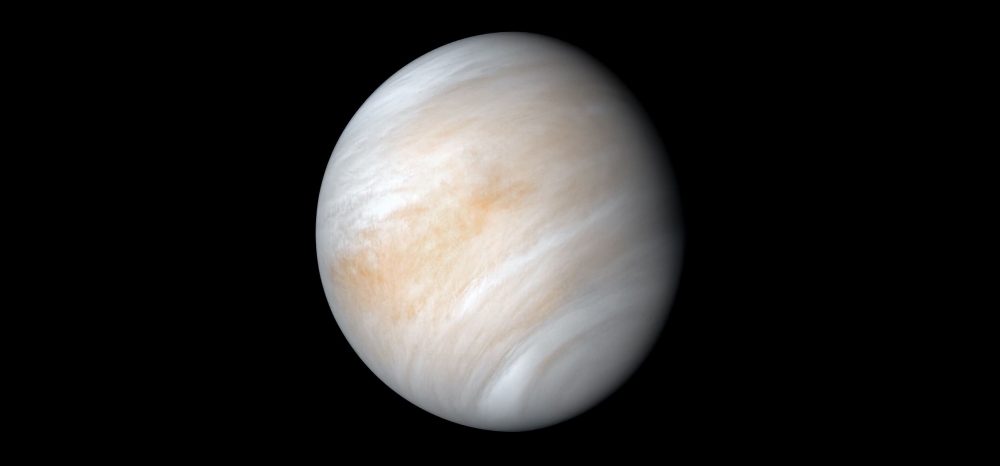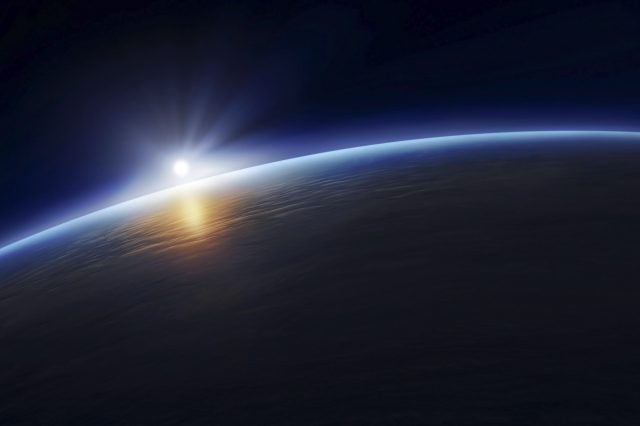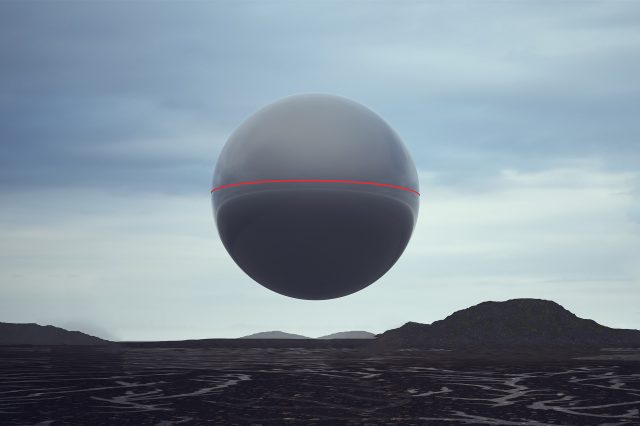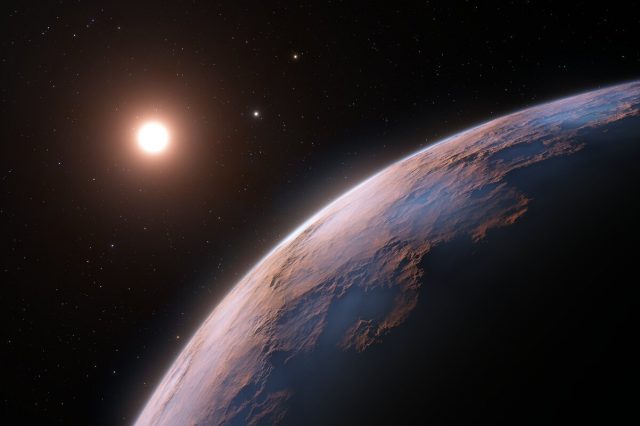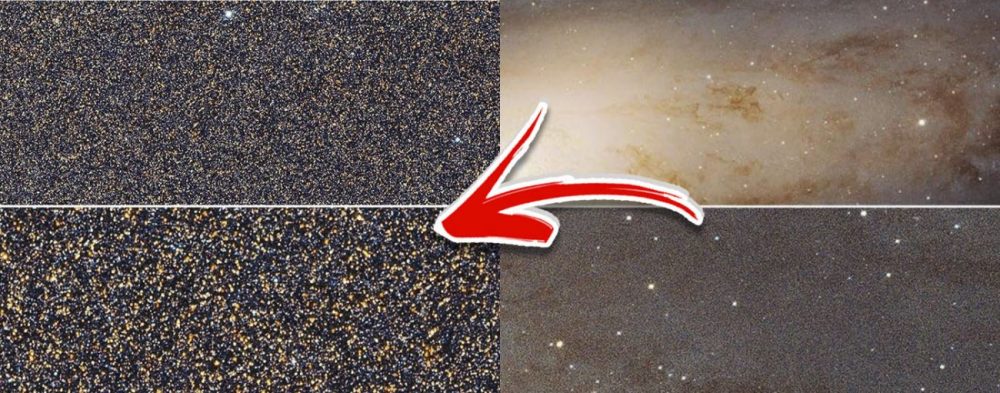We've found tantalizing sings of potential alien life beyond Earth.
Earth is the only place in the entire universe where life exists. That is according to our best knowledge of our solar system, galaxy, and the universe in general. Luckily for the universe, our understanding of it is far from extensive.
And when we think about it, our knowledge of our galaxy and the solar system isn’t much better.
Despite all of our 21st-century technological advancements, humanity is still in its infancy when exploring the solar system.
Sure, we’ve sent mankind to the surface of the Moon and sent spacecraft speeding towards interstellar space.
Nonetheless, we are still unable to answer one of the most asked questions; are we alone in the universe?
We can make an educated guess and say that we are probably not.
In fact, there are quite a few places in the solar system where life as we know it can exist in this precise moment.
Mars is one such planet. The red planet has often been cited as the most-like location where life as we know it may have developed. Recent studies of Mars indicate that if there is life there, it likely is located deep beneath the surface.
NASA’s recent Perseverance rover mission, expected to reach the surface of the red planet in February 2021, will help us find out whether Mars was ever inhabited in the past, and if there’s life there now.
In addition to Mars, there are some pretty good chances that some moons of Saturn and Jupiter could have developed life on their surface as well.
Future missions to Enceladus and Europa will help us better understand what the distant alien moons are like and whether there is life deep beneath the surface. Life on Enceladus and Europa would be unlike anything we’ve ever seen before.
But there’s another place in the solar system where life can exist.
It’s Venus, and a recent report from the Royal Astronomical Society may have provided evidence of life existing on Venus as we speak. With the help of the James Clerk Maxwell Telescope, scientists detected traces of Phosphine in the Venusian atmosphere.
The anomalous discovery prompted follow-up observations, which were done with a group of 45 telescopes from the Atacama Large Millimeter / submillimeter Array (ALMA) in Chile. The follow-up observations only confirmed the discovery. These types of ground-based telescopes can help astronomers get a better understanding of what celestial objects in our solar system and elsewhere are like. However, these telescopes are limited by the weather conditions on Earth.
Ten things you should know
On September 14, 2020, the Royal Astronomical Society reported that astronomers had found conclusive evidence of a gas known as Phosphine in the atmosphere of Venus, some 50 kilometers above the surface. This is, according to astronomers, a massive find because the detection of phosphine molecules, which consist of hydrogen and phosphorous, could point to this extraterrestrial “airborne.” The discovery was described in a study published in Nature Astronomy.
It's 4pm! Time to explain what we've been so excited about – here's your 60 second overview of #VenusNews. Don't forget you can watch our press conference featuring the lead author of the study, Professor Jane Greaves of @cardiffuni, getting started: https://t.co/gtzWjuM5vH pic.twitter.com/udhXvyowSc
— Royal Astronomical Society (@RoyalAstroSoc) September 14, 2020
This is a big deal since high concentrations of Phosphine in Venus’s atmosphere could likely, and probably, be the result of free-floating organisms that reside within the atmosphere of the planet. Curiously, at a distance of 50 kilometers above the surface, where the gas was detected, conditions for life could be stable enough, unlike at the very surface where acidity would destroy life as we know it.
Although the discovery is mind-boggling and the first time we may have actually found solid evidence for life outside Earth, scientists have already speculated that microorganisms could live high above the Venusian surface. However, no such evidence was found until now.
Although the presence of Phosphine in the Venusian atmosphere in the big deal, scientists didn’t know just how big of a deal it was until they checked how much of the gas was present.
Using models developed by Professor Hideo Sagawa, researchers found that the gas was present in about twenty molecules in every billion, which is relatively scarce.
Phosphine, although directly connected to the existence of life, can also be the result o natural processes. Phosphine can also be produced by sunlight, minerals blown upwards from the surface, volcanoes, or lightning.
Although Phosphine can also be a natural occurrence not related to life on Venus, it can’t be produced anywhere near in the amount discovered on Venus by the telescopes.
This means —indirectly— that Phosphine on Venus is not the result of natural processes unrelated to life, and that it is very likely that there are colonies of free-floating microorganisms in the Venusian atmosphere.
In fact, natural processes on Venus could produce about one the thousandth of the amount of Phosphine that the telescopes observed within the Venusian atmosphere.
Previous observations of Venus have hinted at the existence of a “dark streak” where ultraviolet light is absorbed, and it is there where the colonies of “alien” microbes could exist.
On our own planet, Phosphine is related by microbes in oxygen-starved environments.
Conclusion
The discovery of Phosphine in the Venusian atmosphere is of unprecedented importance. It is the closest thing we’ve discovered to prove that we are not alone in the universe, even though life on Venus if it exists, is in the form of microbial life.
Nonetheless, it would greatly increase the chances that somewhere out there, perhaps in the nearest star system to Earth, life has developed and evolved across millions of years just as it did here on Earth.
Maybe somewhere, on a distant exoplanet where liquid water exists, there are sentient beings looking at the stars just as we, wondering if there is anyone out there.
Venus now deserves our undivided attention, and we should work towards learning more about its atmosphere and what these “alien creatures” look like if, of course, they are really there.
Let’s just take a moment and think about what this would mean for society, mankind, religion, and the universe as a whole if there is life on Venus right now.
My mind is blown.
References: NASA/JPL / Royal Astronomical Society / Curiosmos / European Space Education Office / Nature Astronomy

